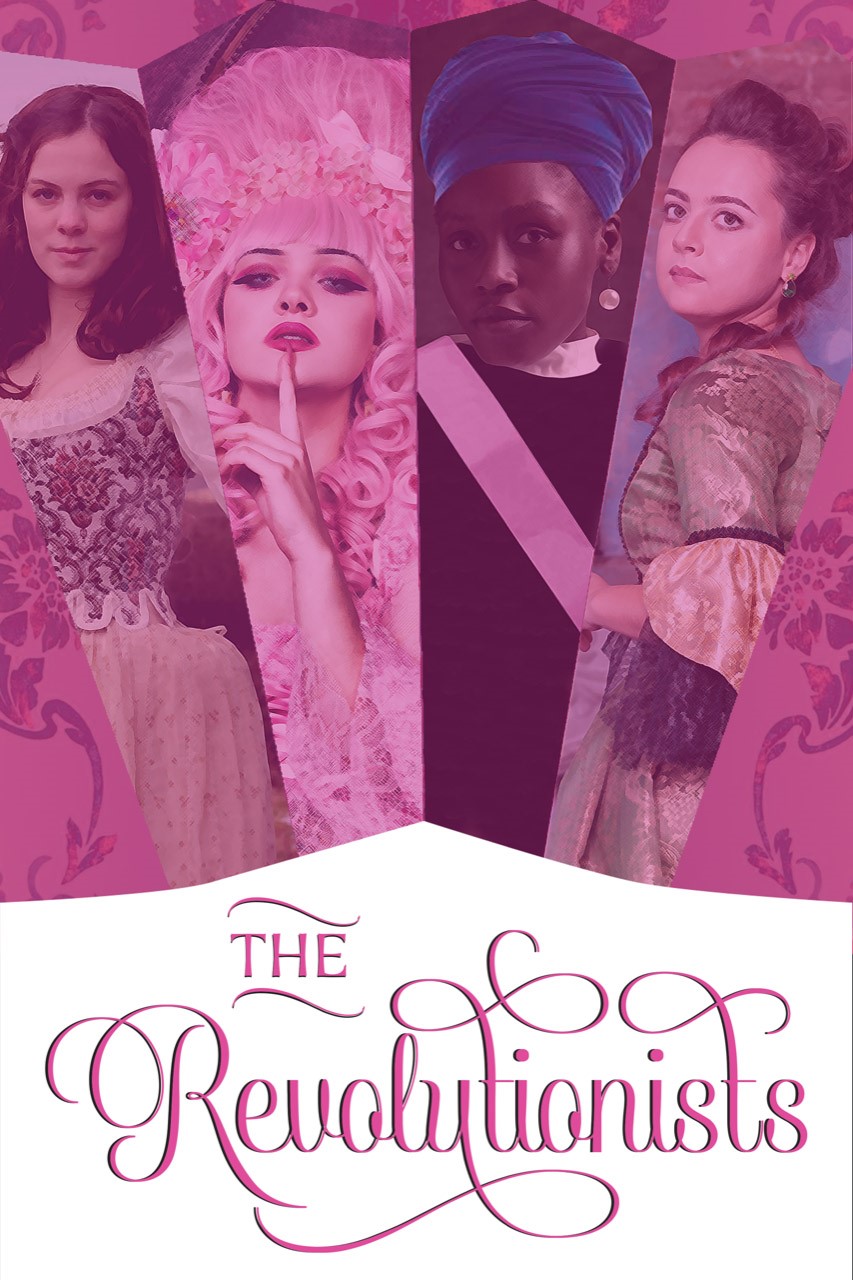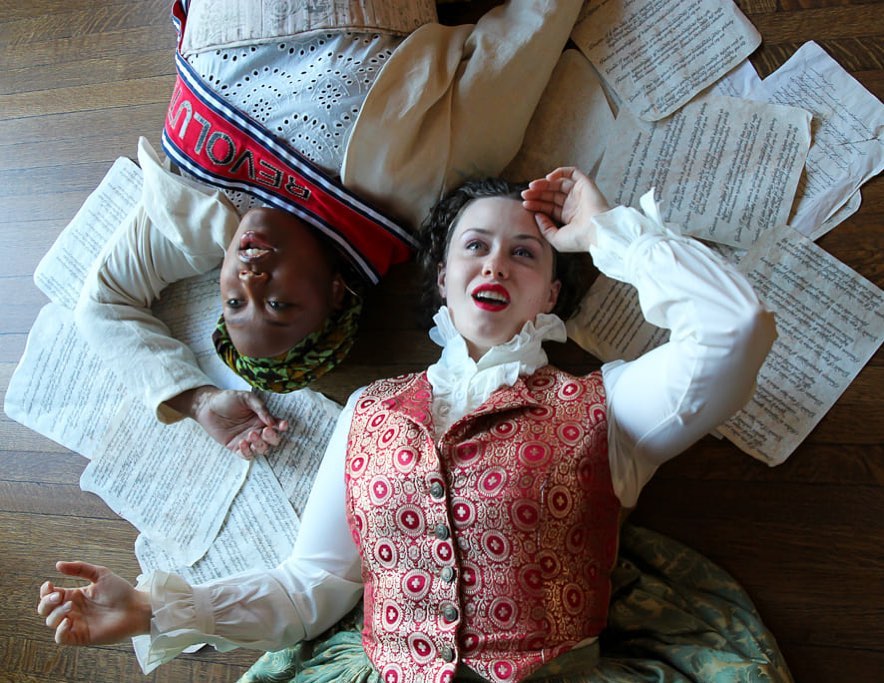Dig Deeper: Villanova Theatre Presents The Revolutionists
By Jenna Renaud
“I write plays that I like to describe as having endings with hard hope…It makes the characters and hopefully the audience want to keep fighting, keep going, keep living, and keep learning at the end of the play.”
—Lauren Gunderson
The Revolutionists: A Villanova Theatre Production 
Villanova Theatre is back for the spring semester with its newest comedy production, The Revolutionists. The show runs Feb. 10–20 in the Court Theatre housed in the John and Joan Mullen Center for the Performing Arts. The show is written by Lauren Gunderson and directed by Valerie Joyce.
The Cincinnati Inquirer describes The Revolutionists as follows: In the shadow of an overworked guillotine, four badass women collide and collude in Paris during the Reign of Terror: fugitive queen Marie Antoinette, idealist assassin Charlotte Corday, Caribbean spy Marianne Angelle, and beleaguered playwright Olympe de Gouges (who just wants to make the plot work out). Lauren Gunderson’s breakneck comedy of ideas is a fiercely funny fever dream as well as a timely rumination on the role of violence in the quest for change, a “sassy, hold-on-to-your-seats theatrical adventure.”
Dig Deeper into The Revolutionists
Women and the French Revolution

Photo provided by Kimberly Reilly & Villanova Theatre
The French Revolution took place from May 1789 to November 1799 and is considered one of the largest and bloodiest upheavals in European history. French citizens eliminated the absolute monarchy and feudal system and created an entirely new political and social framework. Following the death of the King, a radical group called the Jacobins took over, ushering France into what would be later known as “The Reign of Terror.” During that time, they murdered over 17,000 people. In 1795, a new, relatively moderate constitution was adopted and opposition was stopped through the use of the French army, led by Napoleon Bonaparte. Political corruption and unrest continued until 1799 when Napoleon staged a coup to declare himself France’s “first consul.”
During the time of the French Revolution, women began to speak up and fought for their own rights. Following the storming of the Bastille in 1789, women began to join in riots, demonstrate for their rights, and attend the political clubs of men. Although there was no major change regarding the rights of women following the Revolution, they made their presence known and are depicted in the majority of revolutionary art for being symbols of revolutionary values.
Dig Deeper into Women and the French Revolution
- Women’s Rights and the French Revolution: A Biography of Olympe de Gouges by Sophie Mousset
- Women of the French Revolution by Winifred Stephens Whale
- The French Revolution by Geoge F.E. Rudé
- Marie Antoinette: The Making of a French Queen by John Hardman
 Jenna Renaud is a Graduate Assistant in Falvey Memorial Library and a Graduate Student in the Communication Department.
Jenna Renaud is a Graduate Assistant in Falvey Memorial Library and a Graduate Student in the Communication Department.